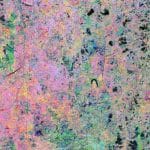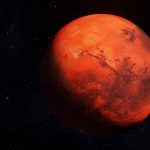The phrase “space garden”, no matter how poetic it sounds is set to become a common phrase as NASA grows greens in the space.

NASA, the premier space agency renowned for its groundbreaking missions, has embarked on an ambitious project that brings the beauty and benefits of gardening to the vast expanse of space.
Through its innovative Space Garden initiative, NASA is pushing the frontiers of sustainable living and exploring the possibilities of cultivating plant life in extraterrestrial environments.
This remarkable endeavor holds the promise of enhancing astronaut well-being, advancing long-duration missions, and paving the way for self-sufficient space habitats.
A question arises here!
Why does NASA have to take this space garden initiative in the first place? The answer lies in the fact that NASA is looking for ways to provide astronauts with nutrients in a long-lasting, easily absorbed form—freshly grown fresh fruits and vegetables.
Previously astronauts receive regular shipments of a wide variety of freeze-dried and prepackaged meals to cover their dietary needs – resupply missions keep them freshly stocked. When crews venture further into space, traveling for months or years without resupply shipments, the vitamins in prepackaged form break down over time, which presents a problem for astronaut health.
Thus, in the quest to create self-sustaining environments beyond Earth, NASA’s Space Garden initiative takes center stage. This visionary project aims to develop gardens and green spaces aboard space habitats, such as the International Space Station (ISS) and future deep-space habitats.
Here is how they are pushing limits to grow plant life beyond earth:
Veggie
Veggie or The Vegetable Production System is a space garden residing on the space station with an aim to help NASA to study plant growth in microgravity, while adding fresh food to the astronauts’ diet and enhancing happiness and well-being on the orbiting laboratory.
This garden is about the size of a carry-on piece of luggage and typically holds six plants.
Each plant grows in a “pillow” filled with a clay-based growth media and fertilizer. The pillows are important to help distribute water, nutrients and air in a healthy balance around the roots. Otherwise, the roots would either drown in water or be engulfed by air because of the way fluids in space tend to form bubbles.
In the absence of sunlight, a bank of light emitting diodes (LEDs) above the plants produces a spectrum of light suited for the plants’ growth. Since plants reflect a lot of green light and use more red and blue wavelengths, the Veggie chamber typically glows magenta pink.
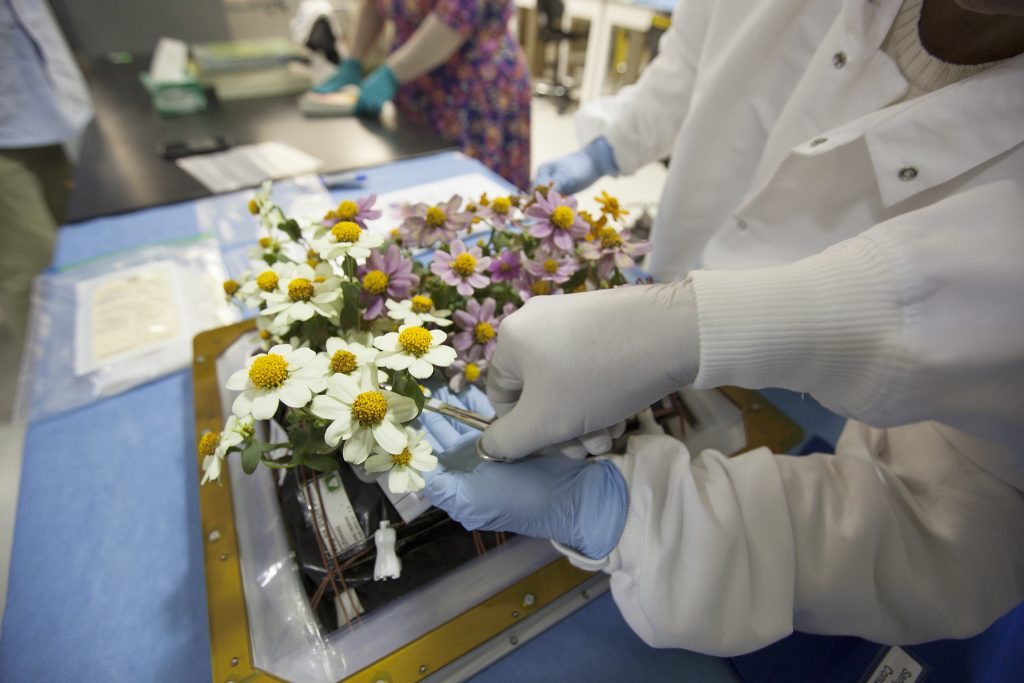
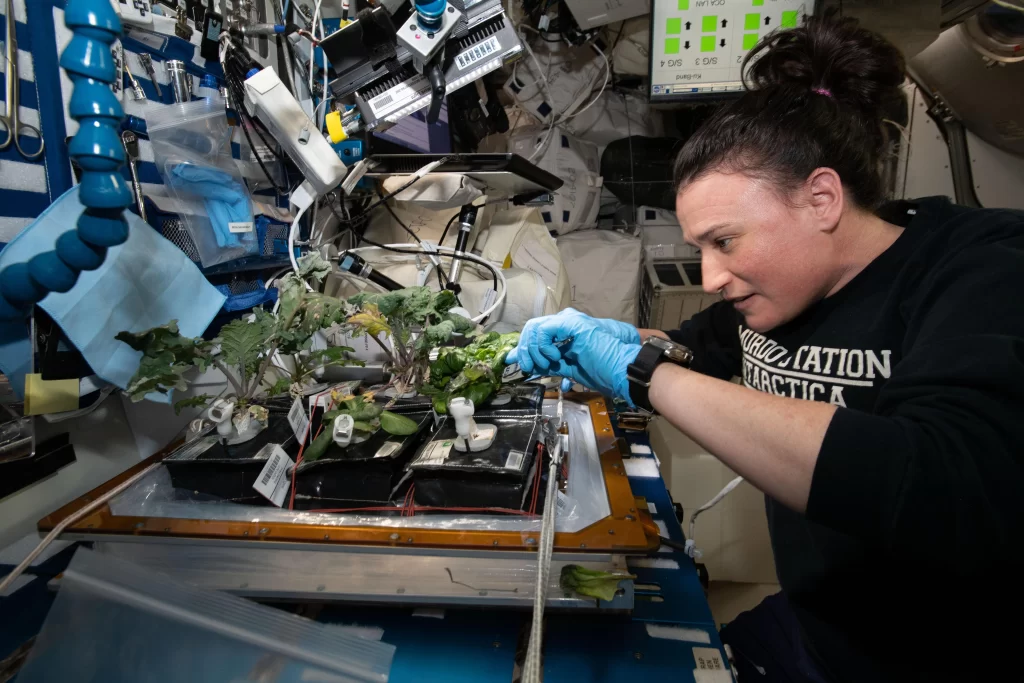
Advanced Plant Habitat
Unlike Veggie, The Advanced Plant Habitat (APH), like Veggie, is a growth chamber with LED lights and a porous clay substrate along with controlled release fertilizer to deliver water, nutrients and oxygen to the plant roots.
APH had its first test run on the space station in Spring 2018 using Arabidopsis thaliana (the “white mouse of the plant research world”) and dwarf wheat. The time-lapse video of this was a popular social media release from the space station worldwide.
Another groundbreaking study to answer the relationship between microgravity and lignin content is in progress under supervision of Dr. Norman Lewis. This puzzle has to solve for effective plantation of plants on space as Lignins in plants have functions whose closest analogy is that of bones in humans.
They give structure and rigidity to plants thus help them to stand upright against gravity. We already know space causes bone and muscle loss in humans because the physical demands are lower in space. So what about lignins?
Lewis and his team also want to know if plants genetically engineered to have less lignin can survive and function normally in space. This could give space-grown plants several advantages, including being better for nutrient absorption when humans eat them and in making plant waste easier for composting.

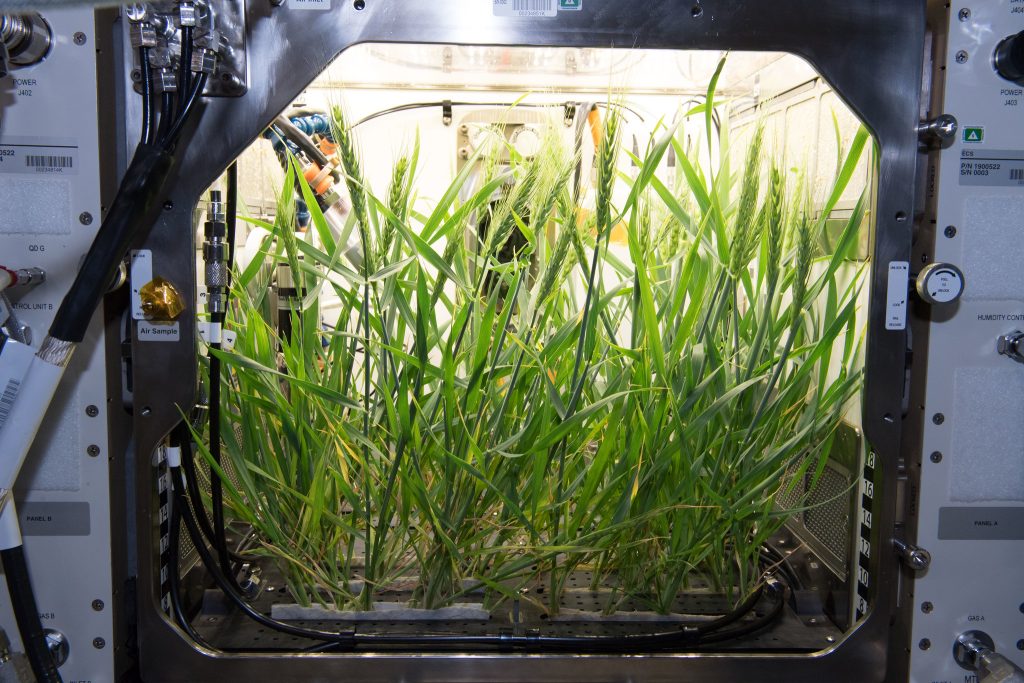
Here’s the list of plants grown till date in space:
1. Zinnias: In 2016, NASA astronauts aboard the International Space Station (ISS) successfully grew zinnias as part of the Veggie Plant Growth System. The zinnias were chosen for their hardiness and vibrant blooms, serving as an important step towards understanding flowering plants in microgravity.
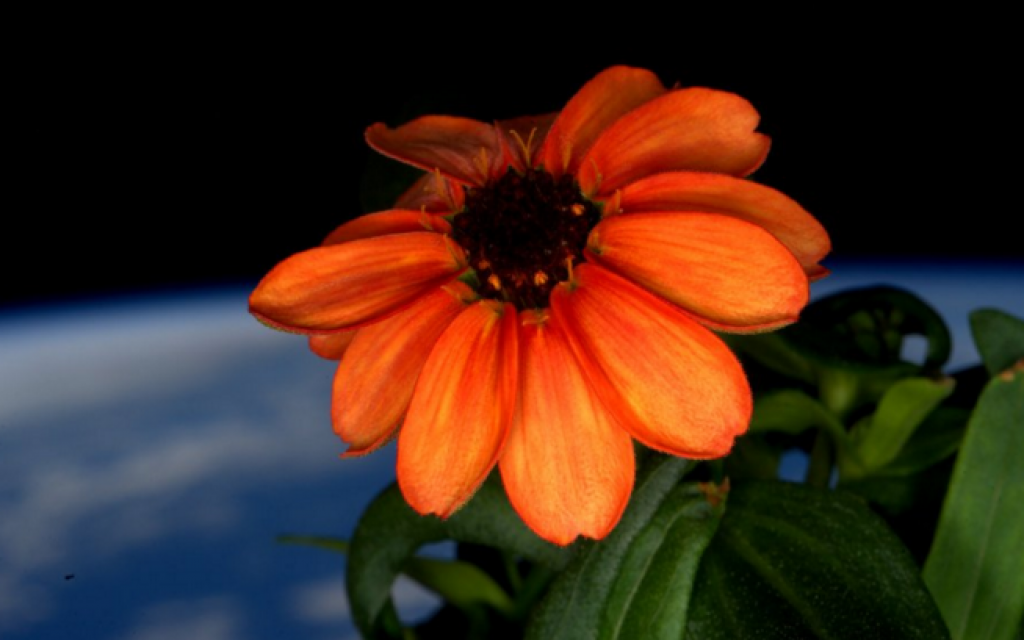
2. Lettuce: NASA’s Veggie Plant Growth System has also been used to grow different varieties of lettuce, such as ‘Outredgeous’ red romaine lettuce and ‘Draper’ red romaine lettuce. These experiments aim to provide astronauts with fresh, leafy greens and to study the nutritional value of space-grown produce.
3. Radishes: Radishes have been cultivated in space to explore the potential of root crops for space agriculture. In 2015, NASA successfully grew red romaine radishes aboard the ISS, demonstrating the feasibility of growing nutritious root vegetables in microgravity.


4. Mizuna: As part of the Veggie Plant GrowthSystem experiments, NASA astronauts have grown mizuna, a leafy green vegetable with a mild, peppery flavor. Mizuna belongs to the Brassicaceae family and is commonly used in salads and stir-fries.

5. Mustard Greens: NASA’s Advanced Plant Habitat (APH) aboard the ISS has been used to cultivate mustard greens, a leafy vegetable with a distinctive spicy taste. These experiments help scientists understand the effects of microgravity on plant growth and nutritional composition.
6. Wheat: Wheat has been successfully grown in space as part of NASA’s efforts to explore the potential for growing staple crops on long-duration missions. Wheat provides valuable insights into the production of grains, which are a crucial food source for astronauts.
![]()

A research enthusiast striving to bring change in the field of Molecular Biology through my knowledge and skills for the betterment of humanity in general and for my home country Pakistan in particular.

